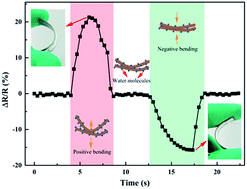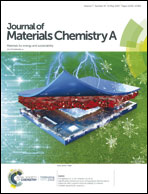An underwater, self-sensing, conductive composite coating with controllable wettability and adhesion behavior†
Abstract
Multifunctional surfaces with special wettability and sensing capabilities have attracted the interest of researchers because of their wide application prospects. Herein, based on octadecylamine (ODA) and carboxylic carbon nanotubes (cCNTs), a conductive composite coating (ODA/cCNT) with a micro–nanoscale hierarchical structure is fabricated by a simple one-step method. The wettability of ODA/cCNT can be controlled, ranging from strong hydrophilicity to superhydrophobicity, by changing the content of ODA, and the adhesive force of the superhydrophobic coating is adjustable over a large range, spanning from 71.4 μN to 30.9 μN. Using the ODA/cCNTs with adjustable adhesion behavior, the lossless transportation of water microdroplets has been achieved. Furthermore, due to its conductivity and special microstructure, the superhydrophobic ODA/cCNT can sense bending deformation via changing resistance and shows a higher sensitivity than other coatings. More importantly, by means of the strong water repellence and the gas sensing property of cCNTs, we report for the first time an underwater, self-sensing, superhydrophobic material with enhanced sensitivity. The change degree of its resistance in water is more than twice as large as that in air for the same deformation. The water level can also be detected by the superhydrophobic coating due to its unique underwater state. Therefore, the multifunctional ODA/cCNT can be an excellent candidate for the fabrication of underwater smart devices.



 Please wait while we load your content...
Please wait while we load your content...